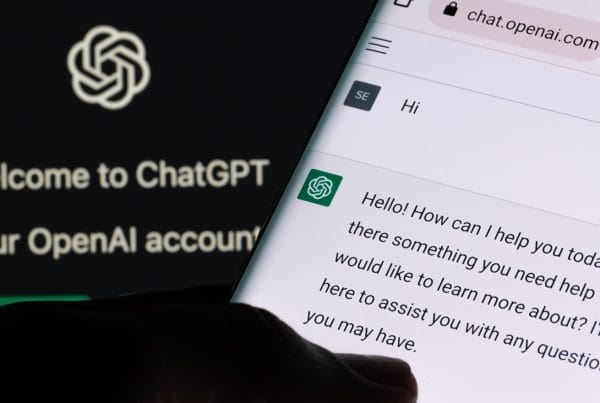Safe Assign is a tool as part of the learning management system (LMS) Blackboard. The goal of Safe Assign is to find if student work that is uploaded was copied from another source, In essence, Safe Assign is a plagiarism tool not an AI Detection tool.
ChatGPT is an AI chatbot created by Open AI and launched in November 2022. With ChatGPT, you can generate any piece of text you want including full-length essays.
It is important to know that there are many other AI tools available now including Perplexity AI, Google Gemini, and Anthropic’s Claude.
Does Safe Assign Detect AI content?
No, Safe Assign does not detect AI content. Safe Assign does not currently have a specialized tool to detect AI-generated content from chatbots like ChatGPT.
Safe Assign is a plagiarism detector.
To detect AI content, you need an AI detection tool.
Plagiarism tools usually have a large database of data that they compare the uploaded text against to see if there are exact matches to show that somebody copied someone else’s work.
Safe Assign uses the following data sources:
- Institutional document archives: Contains all papers submitted to SafeAssign by users in their respective institutions.
- Global Reference Database: Contains over 59 million papers volunteered by students from Blackboard client institutions to help prevent cross-institutional plagiarism.
- ProQuest ABI/Inform Journal Database: More than 3,000 publication titles, 5 million documents, and over 200 topical categories from the 1970s to present time and covering topics from Advertising to Women’s Studies.
- Internet: SafeAssign searches across the broader internet for matching text using an internal search service
An AI detector like our tool Winston AI uses AI that trains on a large dataset to learn the patterns of AI writing vs human writing. AI detection tools need to be kept up to date as AI tools are developing quickly.
Our Tool has a 99.98% accuracy rate when detecting AI-written content
Can ChatGPT be detected on Blackboard?
The company that runs Blackboard (Anthology) is overly cautious when it comes to AI detection and you can read their thoughts on AI use in academic here.
The white paper emphasizes the need for updated policies, better detection tools, and a focus on authentic assessments to uphold academic integrity in the face of advancing AI technologies.
The world has utterly changed since the launch of ChatGPT and I agree with the white paper that we need to have more authentic assessments, which focus on the application of skills rather than just testing knowledge. These skills are less likely to be effectively mimicked by AI.
Even though Blackboard doesn’t have a tool to check for AI, there are two ways you check if AI was used.
The first thing you can do is to use the tools themselves. I use ChatGPT and other AI tools every day and I have developed an intuition on whether a text was written by AI or not. Some of the obvious clues are the vocabulary (often more generic words and phrases) and lack of variation in sentence and paragraph length.
You can also use an AI detection tool like Winston AI. All you need to do is copy the text from the document you are working on and we will give you a prediction on whether we think an AI tool was used to generate the text.
Here I am testing out the text that I just wrote.

As you can see Winston AI correctly identified the content as human-written
Can Turnitin detect ChatGPT?
Turnitin, known for plagiarism detection, launched its AI detector in 2023 with a claimed 98% accuracy rate. However, there have been issues with false positives, leading institutions like Vanderbilt University to stop using Turnitin. Winston AI is known to be a more reliable alternative.
Text generated by ChatGPT is unique and doesn’t constitute plagiarism. While it avoids direct copying, using AI for assignments can still be detected by AI detectors like Winston AI, emphasizing academic integrity.
Read more about Turnitin detecting ChatGPT here.
How to Avoid AI detection of ChatGPT?
In our opinion, it is pointless trying to avoid AI detection. Remember, our AI detection tool has a 99.98% success rate when detecting text generated by ChatGPT.
You can, of course, edit your content so much that it is completely different from the text generated by ChatGPT. If you use AI as a first draft or for some ideas, then it can be a really helpful tool. We are not against using AI but in certain situations, we should avoid it to protect academic integrity.
There are also tools that claim to make AI “undetectable”. I have tested all of these tools personally and they don’t work. Don’t waste your money. All they do is change the word order of the text so that it is really weird and the output quality becomes terrible.
Do me a favor and if you want to try this, just use a prompt in ChatGPT like “Write me essay in a kooky fashion” and you can see a similar result (it may then become undetectable in some free AI detection tools but out tool Winston AI still detects that it was written with AI).
Final Thoughts on Safeassign and ChatGPT
AI Detection tools should be used by all educational institutions. They are a helpful tool in combating a huge rise in students using AI to do their assignments. It almost pains me to know that teachers around the world are reading essays written by ChatGPT with little oversight. It’s pointless for everyone involved.
AI detection tools should be one part of several steps to test whether a text was created by ChatGPT. Popular LMS platforms like Blackboard should have an integrated AI detection tool. While plagiarism detection tools like Safe Assign are also helpful, realistically students are much more likely to use an AI tool to write their essay than just copy it from another source.
If you want to try the best AI detector on the market, give Winston AI a try for free here.




